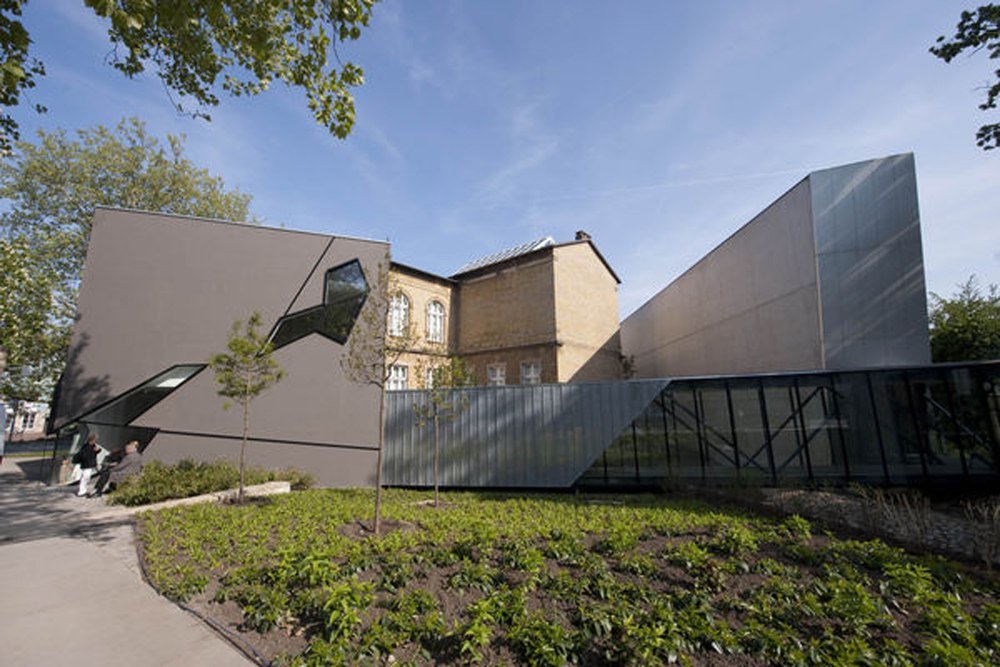Boasting spectacular architecture, the Felix Nussbaum House forms part of Osnabrück’s museum quarter alongside the neoclassical building of the Cultural History Museum, the grand Villa Schlikker built in 1900 and the Excise House. The building itself is a steel-cast Holocaust memorial designed by legendary American architect Daniel Libeskind. He also designed the Jewish Museum in Berlin and won the commission for the redesign of Ground Zero in New York back in 2002.
Built using wood, concrete and zinc, the Felix Nussbaum House was opened in Osnabrück in 1998. The architect drew attention to the life of the persecuted artist with symbolic architecture, which visualises the constant movement and increasing disorientation of the artist while in exile and the period of displacement and danger leading up to his death at Auschwitz. The museum’s atmosphere gives visitors a sense of the ever-present uncertainty and fear faced by Nussbaum with slight rising and descending gradients, windows without right angles and transparent floors. The museum has since received a new entrance hall, which was also designed by Libeskind, and underwent a period of refurbishment and extension before reopening in May 2011. Regular tours of the museum are offered which also explore its unusual architecture.
With over 200 works, the Felix Nussbaum House is the largest art collection of the Osnabrück-born Jewish painter Felix Nussbaum, who was murdered by the Nazis. Organised around selected themes, the presentation of the collection provides a concentrated overview of Felix Nussbaum’s artistic achievements, from his earlier pictures from his time in Berlin to his later works created in Brussels between 1940 and 1944. Nussbaum’s works are also presented in dialogue with contemporary positions in the expressive architecture of Felix Nussbaum House with the Daniel Libeskind’s very particular spatial concept.


